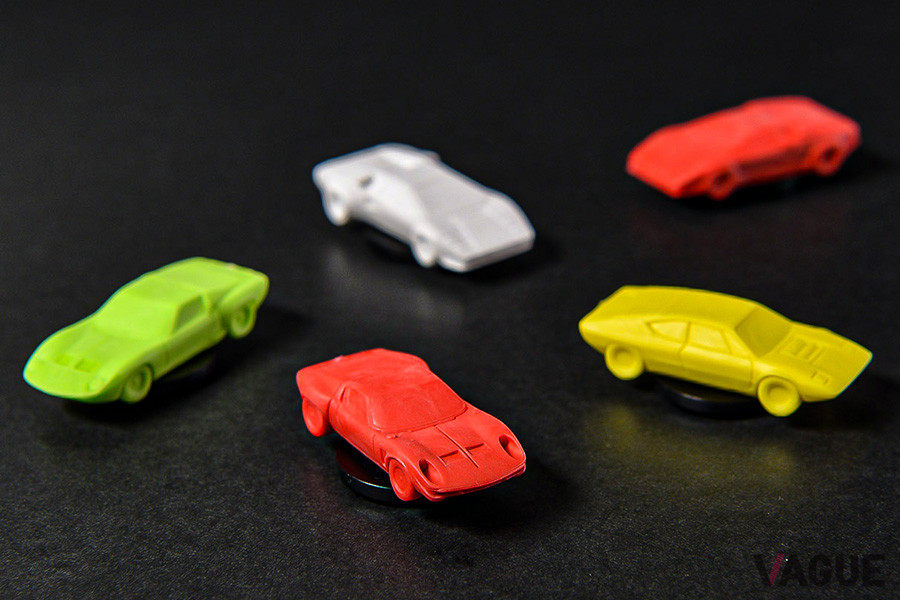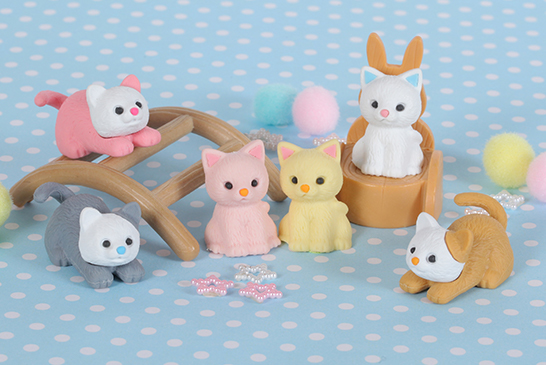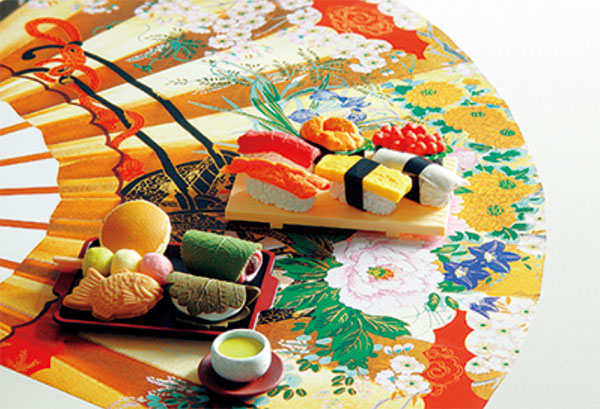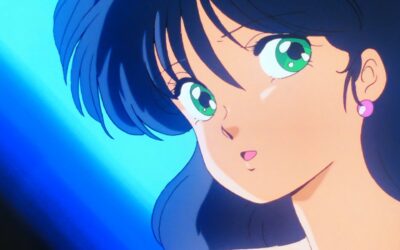Japanese stationery is elaborate and of high quality, and is highly regarded around the world. There are also many kawaii products, which are highly popular among children. Here we would like to introduce erasers that have evolved remarkably among them.
Traditional Plastic Erasers

The eraser was born 200 years after the pencil
In 1770, the English chemist Priestley discovered that pencil letters could be erased with natural rubber. This was the origin of the eraser, 200 years after the discovery of the pencil.
In 1772, the first erasers were sold in England. From then on, they spread from England to France, then to Europe and the rest of the world.
Plastic erasers born in Japan
Erasers were first imported to Japan during the Meiji era (1868-1912). At that time, Japan was in the process of establishing a compulsory education system, and a large number of pencils and erasers were needed.
The first erasers made in Japan were produced by a rubber company in 1883, according to records. It was not until the beginning of the 20th century that erasers began to be made in earnest, and several eraser manufacturers were born at that time. In 1927, drawing erasers were created.
However, since the securing of natural rubber was dependent on imports, the development of erasers made of alternative materials to natural rubber was promoted to ensure stable production. In response, Japanese manufacturers continued to research ways to improve the erasing power of erasers, and in 1959, they introduced plastic erasers, earlier than any other country in the world.
Tombo MONO Series

©Tombow Pencil
The MONO series is one of Japan’s most famous plastic erasers, created in 1967 as an accessory for the top-grade “MONO100” pencils released by TOMBOW PENCIL to commemorate the company’s 55th anniversary. The plastic eraser was so well received that the company decided to commercialize it.
Two years later, in 1969, their designer commercialized the packaging with a blue, white, and black tri-color stripe pattern. In 2017, the pattern was registered as a trademark based on color alone.
As Kids Toys
In the 1970s, erasers developed from stationery into toys. However, they were only in name, and most of them were that could not erase.
“Super-Car” Erasers

The first toy eraser was the Super Car Eraser, which was introduced around 1975 as a result of the “Circuit-no-Okami”(Wolf of the Circuit) manga serialized in the weekly Shonen Jump magazine. A supercar is a luxury sports car, and the Lamborghini Countach was very popular in Japan.
And when supercars were released as capsule toys, made of rubber material around 3cm in size and in colors such as red, blue, and yellow, children put their efforts into collecting them. And they turned their study desks into a circuit by using Mitsubishi Electric’s “BOXY-100” ballpoint pens to play these super car erasers.

Circuit no Okami #1
Media type: Comics
Language: JP
Author: Satoshi Ikezawa
Availability: CDJapan
Ultimate Muscle: Kinnikuman Erasers

“KinkikuMan” is a manga series that ran in Weekly Shonen Jump from 1979 to 1987, and was also made into an anime. For a while, it was a comedy, but with the start of the “Chojin-Olympics”, it was changed to a fighting manga. Since then, many attractive “Chojin”(superheroes) have appeared one after another, both as allies and enemies, and the series has gained popularity among children.
In sync with the popularity of the manga, “Kinkeshi” also became popular. It stands for “Kinnikuman Eraser”, a doll-shaped toy sold as a capsule toy, similar to the Super Car Eraser, with the “Chojin” from the anime as erasers.
This toy was called an eraser, but since it was made of vinyl chloride, it did not function as an eraser, and it is easy to imagine that there were many adults who tried to erase letters from their pencils with “Kinkeshi” in their childhood.

Kinnikuman #1
Media type: Comics
Language: JP
Author: Yudetamago
Availability: CDJapan
Puzzle Eraser
Nowadays, eraser manufacturing technology has improved, and erasers of various shapes and sizes are now available, while still having the original function of erasing letters. A typical example is the puzzle eraser.
Evolving Puzzle Erasers
The puzzle eraser is an item that can be used to create items of various shapes, such as spheres, three-dimensional objects, animals, and food, by combining several erasers.
The first step in making a puzzle eraser is to make the prototype out of wax. For example, details such as the air bubbles in a cake sponge or the texture of a bird’s feathers are created in the wax prototype stage.
Next, the wax mold is remolded using a material called a plastic cast. Then, this is cut into parts and a mold is made for each part.
The eraser material is pelletized and colored evenly using a machine called a tumbler. The colored pellets are then stirred in a cylinder at 140℃ to soften them before being injected into a mold. Finally, the molded erasers are pushed out of the machine one after another.
Animals

©Iwako
Here are some of the most distinctive puzzle erasers. The most kawaii, and loved by children and adults alike, erasers are the animal series. Not only land mammals but also fish are popular.
Sushi

©Iwako
The most popular food items are sushi and sweets. Sushi in particular gives the impression that you are looking at the real thing, since the colors of the ingredients originally show up well.
Minecraft

Minecraft, which is popular all over the world, is a great match for puzzle erasers.













